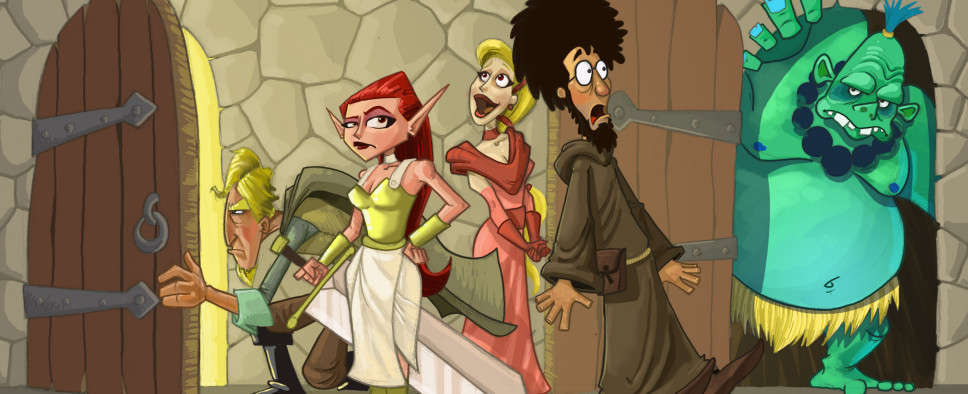The Origin of Frayed Knights: Dice and Paper Edition
-
Category: News ArchiveHits: 1577

While we patiently wait for its sequel, subtitled The Khan of Wrath, Jay "Rampant Coyote" Barnson has decided to spend some time to blog about the origins of Frayed Knights: The Skull of S'makh-Daon. Here's a snippet on the D&D 1st edition feeling Barnson was trying to parodize in his game:
Modules and supplements back then had the really awesome pulp-fantasy names like (Queen of the Demonweb Pits,) (Assault on the Aerie of the Slavelords,) (The Caverns of Thracia,) (Tomb of Horrors,) (The Ghost Tower of Inverness,) (City State of the Invincible Overlord,) (Against the Cult of the Reptile God,) (Expedition to the Barrier Peaks,) etc. Man, I loved those titles. And the modules while not always expertly delivering on the promise of those magnificent titles were great foundations on which a gaming group could build an experience.
That was really the key. While everyone who had played The Keep on the Borderlands had somewhat similar experiences based on the module, it was a little (or a lot) different for everyone. When I envision an (ultimate computer RPG) which I hope to play (or even build) one day, that'll be a major part of it. A luxuriously hand-crafted world and plot, and the player has a ton of freedom to do things how he wants, and have the game react appropriately. It was a (distant) goal in Frayed Knights, which resulted in lots of duplicate dialogs with slightly different variations.
The banter at the table was of course a major part of trying to recapture that experience as well. My mental model for the world was a campaign setting invented by a gifted, earnest, but not entirely clueful 14-year-old with delusions of grandeur (sound familiar?), totally missing the lack of logical consistency inherent in both the world and the rules. Hey, that means I did all that deliberately, doesn't it? The party members are characters played by somewhat more experienced players who are playing along and just having fun role-playing their characters, papering over the inconsistencies in the world with brilliant explanations for why things work the way they do.
Some of the aspects of old-school D&D and similar games I just imitated (I won't say I parodied or paid homage to, but maybe there was a little of both) was the ungodly number of spells (and items) in the core game. It's both brilliant and terrible. For me, trying to balance all these items and spells was a little bit on the terrible side. But the point of AD&D was to make sure there was so many cool things for players to use (or have used against them) that the game would stay interesting through dozens of campaigns. It worked!

